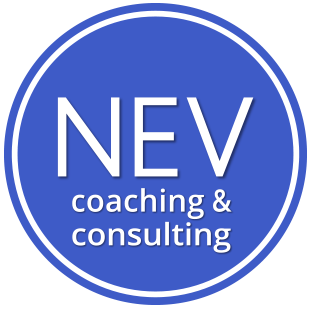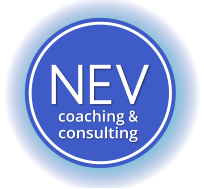 What is human talent development and why is it important?
What is human talent development and why is it important?
How can talent be developed?
Over the years we’ve seen a lot of inquiries about what it really means to develop talent effectively within an organization, as well as what all is involved in creating effective and enriching Talent Development Plans.
And this is especially key right now, as in any moment of crisis, because ensuring your people are well managed, motivated, and informed, is critical for current and future business success.
Because this is one of our main consulting specialties, we wanted to share with you some core, basic practices in this area, to help you review and revise your own talent development efforts.

This is obviously a very extensive topic with many different options and opinions.
But for the purpose of this initial post, we will review a few of the key fundamentals of ANY Talent Development Plan, no matter your culture, sector, organization size, or particular objectives and challenges.
But before we begin, it’s important to define the term itself.
1. What is Talent Development really?
Defining Talent Development
In our opinion, it’s:
- Performance:
- The function and process of regularly measuring and assessing the performance of your individual employees and teams, and…
- Progress:
- Putting in place the values, philosophies, strategies, practices and tools to ensure their continuous, healthy and positive progress and achievement…
- Objectives:
- According to the particular objectives of your organization and the specific needs and growth opportunities for each individual.
Your Talent Development PLAN then, is how you implement this as the particular leader or organization that you are.
2. Why is Talent Development so important?
What benefits does a good Talent Development plan offer?
Quality employees and teams need the relevant and appropriate environment, structures, and opportunities to motivate and support them to continue achieving their best, for themselves and the organization they belong to.
And trust and belonging are KEY.
If they don’t trust their management, team(s), and organization to make the most sound decisions and actions in their best interest and that of the company, there can be no hope of developing them.
And if there is trust, proven and consistent over time, as well as the sense that they “fit” well within their particular position, team, department and organization, they will feel that sense of belonging.
Belonging is key because once that is established and anchored, employees and teams will be willing to do a great many wonderful things to excel and fulfil the company’s objectives.
Above and beyond their job description.
And this is where organizational greatness takes hold.

So if you have managed to create a stable sense of trust and belonging in your organization, there are certain basics you need to have in place for a quality Talent Development Plan to triumph:
3. Keys to Human Talent Development in an organization
How to develop human talent in a company?
-
Clear objectives
Clear objectives for the organization as a whole, that are then appropriately distilled down to each department and team. Without this, the rest doesn’t work.
People will not know what to work towards if it hasn’t been clearly defined and expressed to them. This includes technical as well as interpersonal and ethical goals.
And the only way to ensure that there is alignment, relevance, meaning, and coherence in the system, is to start from the top down.
-
- First, what major objectives does the company have?
- Then how does this trickle down to each organizational department and team?
- And finally, what does this mean for the operation and performance of each individual employee?
This is not a complex process, but it does need to be rigorous, reliable, and thoughtful.
Taking into account the strengths, opportunities and challenges of the organization as a whole, down to each worker.
-
A reliable and valid system for Measuring
Reliable and valid systems of measuring employee performance (if not also each TEAM), in ways that are truly meaningful and not vanity based.
You can measure anything you want, but it doesn’t mean that it will give you true and effective insight and evidence that you seek. This is what is meant by vanity metrics.
Sometimes we measure things like “the number of client calls”, thinking this will tell us about the productivity of a given employee.
But if that employee is not properly skilled and trained in getting the desired results out of those calls, then all he/she is doing is burning valuable client contact opportunities.
Perhaps then what would be a better measure, is the number of client sales, satisfaction ratings, or referrals.
Like any scientific experiment, you need to ensure that your measures are valid (effectively evidencing what you want to measure) and reliable (will give consistent results across different employees and occasions).
And lastly, your measurement system and tools need to be fair, ethical and sufficiently intelligent so that you can properly review and understand any fluctuations and other anomalies.
Otherwise, employees will ignore them or even rebel against them.
-
Company Culture
A company culture that appropriately and effectively supports healthy communication, collaboration and growth in your employees.
You may have achieved #1 and #2, but if your employees don’t feel that their organizational culture truly supports the type of development they are promoting, they will feel blocked at the least, and frustrated or apathetic at worst.
In some extreme cases, this can even create toxicity, if workers feel that they are receiving unstable, inconsistent and penalizing messages and repercussions.
And this happens more than you might imagine.
Companies touting their desire for a more entrepreneurial culture yet punishing employees for expressing out-of-the-box ideas and healthy risk-taking.
As an example: even if someone is way off the mark with their ideas, there are ways to communicate with and guide them that can continue to positively fuel their motivation.
4. Talent Development Plan
How to plan the Development of Human Talent in organizations?
So if you were to create a Talent Development Plan, or already have one in place, make sure to include the following:
-
Establish general and annual objectives for each employee
Once the company’s, department’s, and team’s particular objectives have been intelligently identified, you can break these down for each individual worker, according to their position, specialty, projects, strengths and improvement points.
So, we suggest having general objectives, that will represent their specific, ongoing responsibilities, again according to their particular job.
And then also some detailed, yearly goals, to account for the timely priorities they need to accomplish and/or improve each season.
These should include things they are already doing well and should continue to do so, as well as their weaker points, to continue growing their expertise and performance.
-
Individual employee performance reviews, both qualitative & quantitative
Make sure to measure and provide appropriate feedback on their:
-
-
Hard skills
Technical in other words, as appropriate to their position and as detailed in their job description.
-
-
-
Soft skills
Interpersonal skills and behaviour, and effective team collaboration (where appropriate).
-
-
-
Fulfilment of objectives
How well and fully they have achieved their general and yearly objectives, as outlined in #1.
-
-
360 process to evaluate Human Talent Development
The effective tools and process of evaluating an employee’s performance by asking for qualitative and quantitative feedback at least once a year from RELEVANT other employees.
-
-
Self-evaluation
How they evaluate themselves in the fulfilment of their general and yearly objectives (plus their comments).
-
-
-
Manager evaluation
How their reporting manager evaluates them on the achievement of their set objectives.
-
-
-
Peer evaluation
How others on their same level within the organizational hierarchy evaluate them on relevant objectives.
-
-
-
Reports
How those reporting directly to the employee evaluate them on relevant objectives (If relevant).
-
We recommend giving an employee their 360 results right before a meeting with their direct reporting manager to discuss it, to ensure the best interpretation of the feedback.
-
Healthy communication process
To ensure that all employees are receiving relevant and effective insight on their performance, communication needs to include:
-
-
Immediate, ongoing information exchange and feedbacking
Specifically right after a particular demonstration of their behaviour or performance (this makes it all the more relevant, useful and effective).
-
-
-
Regular meetings to reflect and resolve core issues
Once a month is effective, but if the employee is new or managing a particularly important initiative or situation, then even once a week or twice a month might be most effective.
-
-
-
Yearly evaluation process where both manager and employee come prepared
This refers to #3 but it’s critical that this is not a one-sided conversation simply led by the manager.
To ensure the conversation is as meaningful as possible, it’s best to have both manager and employee attend with their previous reflection already done.
Even if the employee receives their 360 right before the meeting, you can ask them to reflect on a few key questions well in advance.
Such as, “How do you think you’ve performed this year?” and “How would you like to excel going forward?”.
-
-
A fair and motivating reward system to encourage their continued growth and excellence
-
Monetary
A raise, a bonus, or other such incentives.
-
-
-
Extra benefits
Particularly if they are looking for more work-life balance (flex-time, working from home, etc.).
-
-
-
Opportunities (personal and professional)
Including but not limited to the following:
- Promotion – If they are performing well, you can encourage them to work towards a promotion.
- Training – Additional training opportunities, in professional, business, or personal development, including sponsoring them for an additional degree, courses or coaching.
- Trips – More participation in industry-valued conferences, client-facing meetings and roadshows, etc.
- Upscaling opportunities – Any other initiatives that give them an advantage to meaningfully increase their knowledge, skills, experience, network, results, etc.
-
We covered a lot here but it’s still only the beginning!
How do you envision developing Human Talent in your company?
You can continue reading our related NEVBlog: “3 Key Reasons Your Team Performance is Failing”
Of course, If you’re looking for more insight and support in this area, don’t hesitate to contact us with your questions and particular case.
We always wish you the greatest success and joy in your professional ventures!




